When designing a garden, there are many decisions to make and hundreds of options to consider when placing plants. First, you have to place plants where they will actually grow. This is what separates garden design from any other form of design: Each decision affects a living thing.
Once you've thought about the plant's growing conditions, you still have a range of options for designing with that particular plant. Today, the plant in question happens to be the unassuming daisy. It's a classic flower that loves sun and can handle a variety of soil types, so it is fairly low maintenance. Designing with daisies boils down to one basic question: mix or mass?
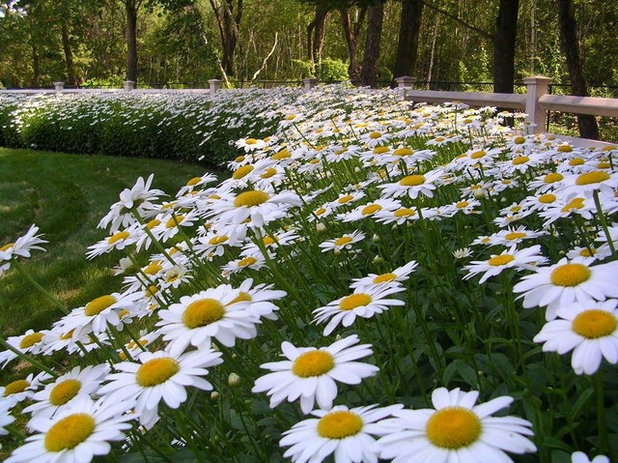
Elliott Brundage Landscape Design
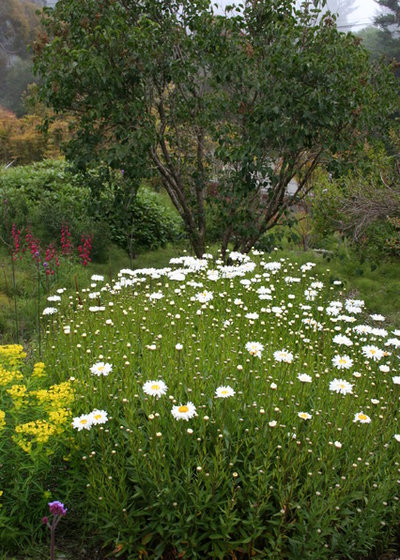
Genevieve Schmidt
Shasta DaisyThe familiar "He loves me, he loves me not" flower, this daisy looks fabulous in large drifts. The Shasta daisy also looks great as a standalone clumping plant, surrounded by other perennials. Which do you prefer?
Botanical name: Leucanthemum ×
superbum Common names: Shasta daisy
USDA zones: 5-8
Water requirement: Water to establish, then drought tolerant
Sun requirement: Full sun
Mature size: 3 to 6 feet tall, 1 to 3 feet wide
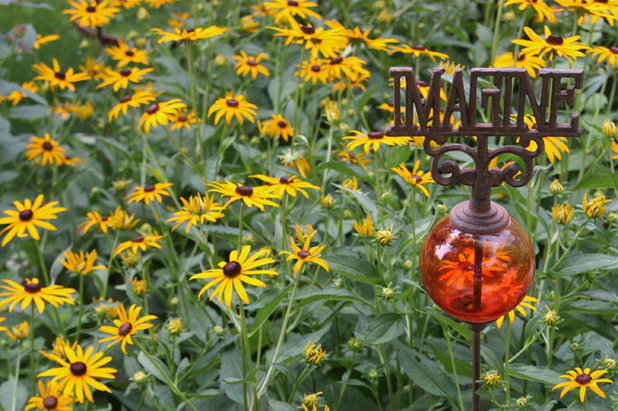 Black-Eyed Susan
Black-Eyed SusanThen there are the Black-eyed Susans. They have a classic daisy form, but their buzzing beelike combo of yellow and black livens up fields from Nebraska to Pennsylvania.
Botanical name: Rudbeckia hirtaCommon names: Black-eyed Susan
USDA zones: 3-11
Water requirement: Water to establish, then drought tolerant
Sun requirement: Full to partial sun
Mature size: 2 to 10 feet tall depending upon variety
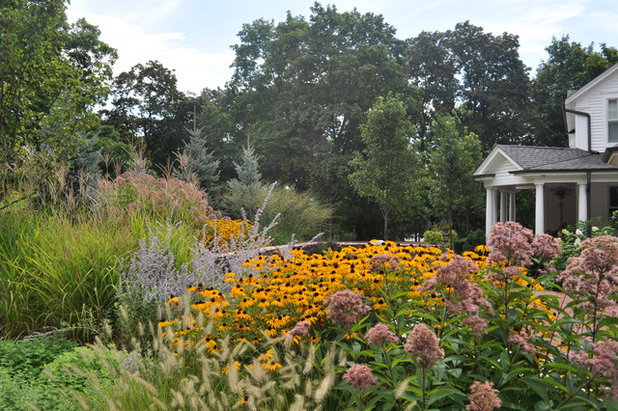
Milieu Design
Mixed in a perennial border, Black-eyed Susans brighten up a lackluster bed and offer contrast to blues and purples.
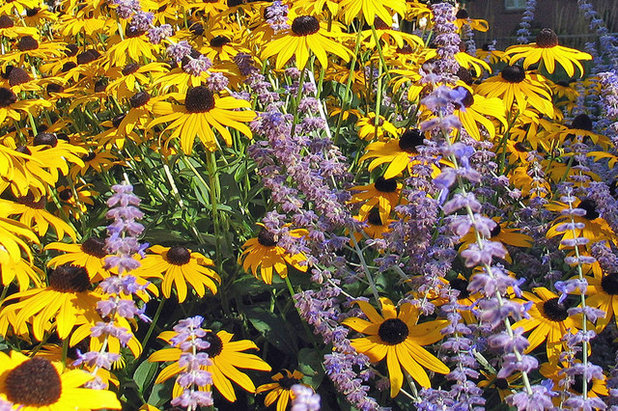
R DESIGN Landscape Architecture P.C.
Do you like the two colors intertwined, or do you prefer a more orderly arrangement?
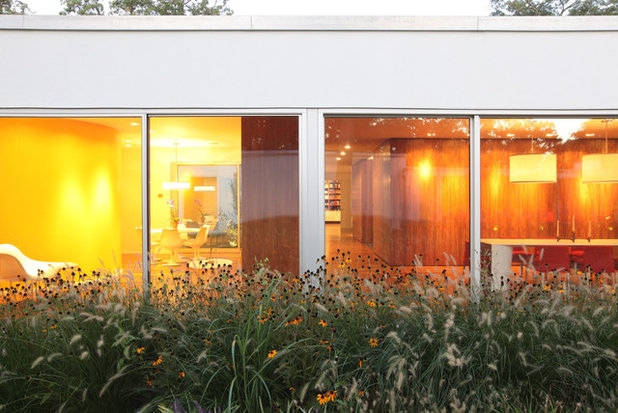
SchappacherWhite Architecture D.P.C.
Keeping with a more naturalistic planting theme, Black-eyed Susans look right at home weaving in between native prairie grasses. These plants are tough and can handle the competition.
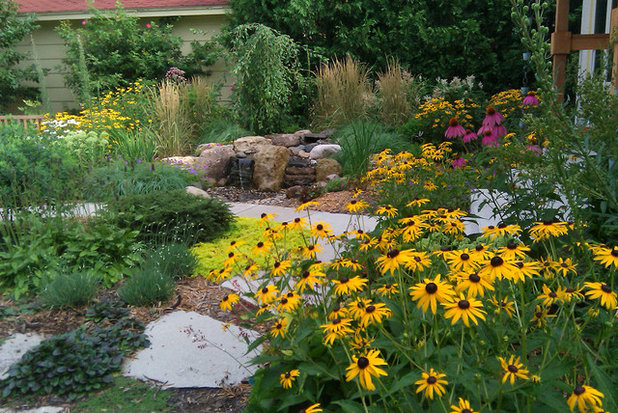
Field Outdoor Spaces
Clumps of these blooms fit well into a naturalistic landscape design.
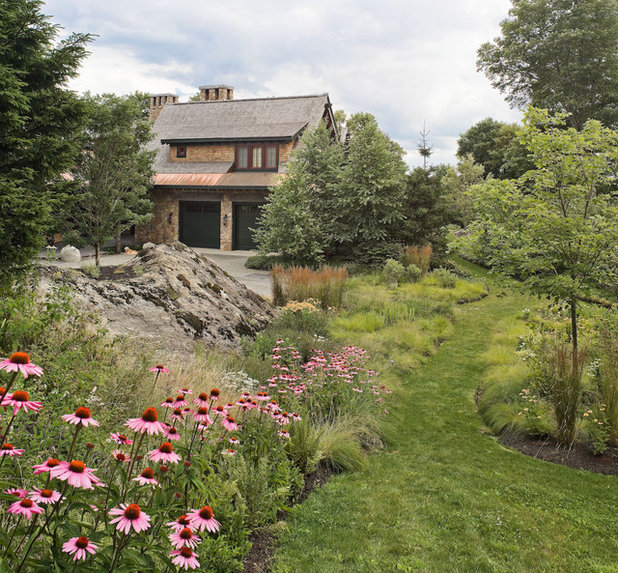
Wagner Hodgson
ConeflowerAnother classic flower of the
Asteraceae family is the coneflower. The traditional Echinacea features a cone-shape center and genteel purple flowers. Massed along a stone border, they make a beautiful statement in summer.
Botanical name: Echinacea
Common names: Coneflower
USDA zones: 3-9
Water requirement: Water to establish, then drought tolerant
Sun requirement: Full sun
Mature size: 2 to 4 feet tall, 1 to 2 feet wide
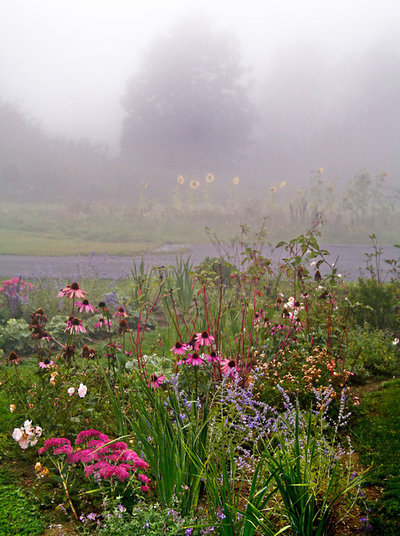
Matthew Cunningham Landscape Design LLC
Of course, these tough and hardy prairie natives can interweave amid other garden plants. Which looks best to you?
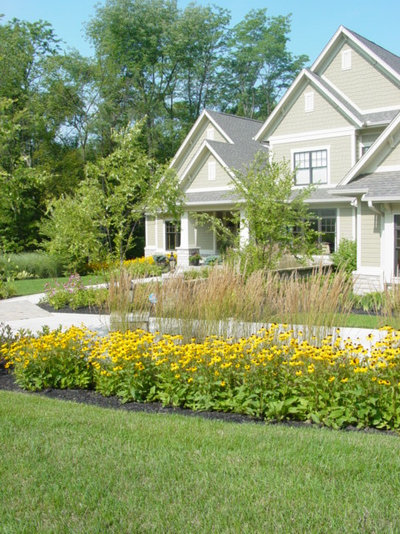
River Valley Orchids
The choice to mass or mix daisies is up to you. They are tough enough to handle either method and beautiful enough to complement a host of designs. How will you plant your daisies and daisy-like flowers this year?
More:Find more great design plants and flowers





